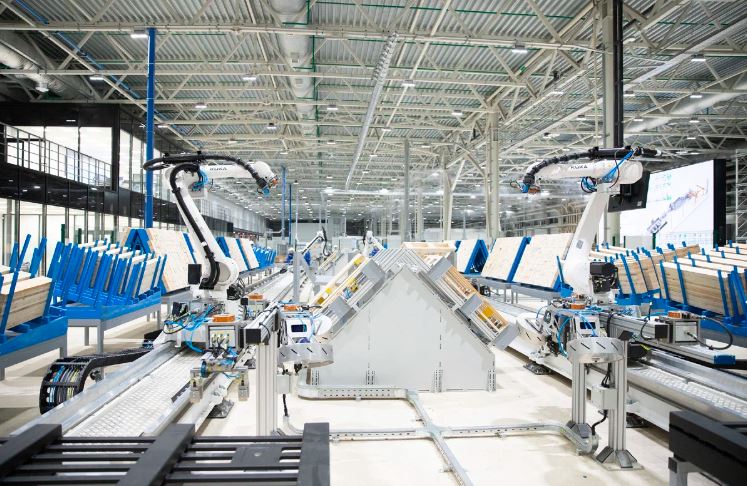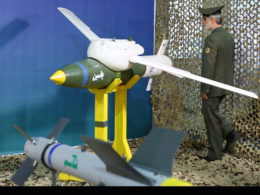Russia’s convoluted attempt to produce Iranian Shahed kamikaze drones domestically spotlights systemic flaws and mismanagement in its defense industry, Defense Express reports, citing leaked data published by the Russian opposition group “Protocol.” According to this data, the Alabuga special economic zone in Tatarstan aims to manufacture Shahed-136 drones under an exorbitant deal with sanctions-hit Iran. However, the opaque contract, inflated costs, unrealistic timeline, and makeshift production facilities all raise doubts if the drones will ever be mass-produced.
“Established in 2006 with extremely favorable conditions for investors, for example, a 2% profit tax instead of 20% and the cancellation of property tax altogether, Alabuga became Tatarstan’s main investment project, accounting for 74% of direct investments in this subject of the Russian Federation.
Alabuga has become a quite convenient platform and base in Russia for a whole range of foreign companies, including American ones like 3M and Ford. At the same time, the state has already invested huge funds there, sometimes for very dubious things, for example, the production of pallets using Kuka robots within the framework of an educational project,” Defense Express writes.

The license agreement with Iran alone cost a staggering $1.5 billion, per the leaked data. But Russia balked at Tehran’s $900 million price tag for setting up manufacturing, so the sanctioned VTB Bank funded over half the costs, likely because VTB itself is one of the main Russian investors of Alabuga.
Even despite Russia’s cooperation with Iran is obvious for the whole world, the topic is classified in Russia. In some documents shared by Protocol, the Shahed-136 kamikaze drones themselves are called “boats,” and Iran – “Belarus.”
For Alabuga, licensing drone production was an act of desperation after Western companies exited Russia and staff got drafted in the war against Ukraine. The deal would secure “mobilization immunity” to avoid conscripting their skilled workers.
However, the convoluted process reveals the hollowness of Russia’s defense industry. Production involves reverse-engineering the drone’s simple electronics and swapping out engines, but manufacturing the munition proved so problematic they will dig a pit on-site. The 2-3 year timeline for full localization seems fanciful when even procuring the materials is challenging under sanctions. Moreover, the insistence on cash payments to Iran suggests corruption padded the estimates.
Significantly, Russia’s largest drone maker Zala Aero, a division of Kalashnikov, rebuffed involvement in manufacturing the Shahed-136. Competition likely explains why Kalashnikov spurned reproducing Russia’s new weapon of choice: its Zala Aero produces Lancet kamikaze drones and could well offer its options to create Shahed-136 analogs.

For Alabuga, the Iranian drone production may primarily be a ruse to misuse state funds rather than yield actual munitions. While the contract technically provides military production to avoid drafting staff, doubts linger whether the sanctioned VTB Bank can finance the project. VTB Bank is under sanctions and in 2022 suffered record losses of 760 billion rubles ($8.5 billion). That is, if there are even bigger problems with money for VTB, the project’s financing may be stopped.
However, appearance alone may be enough to achieve Alabuga’s goals: merely by existing on paper, it makes sure its employees evade the draft and uses up state money. This all means it is unlikely that the factory will be launched in 2-3 years, or ever, for that matter, Defense Express writes.
The misleading drone deal spotlights systemic dysfunction in Russia’s defense establishment. Opaque contracts, inflated costs, unrealistic timelines, and makeshift production all undermine Russia’s attempt to mass-produce the sanctioned Iranian kamikaze drones domestically. With Western technologies now inaccessible under sanctions, Moscow’s bid to reproduce even basic drones has become a comedy of errors. Alabuga’s unlikely drone assembly line epitomizes the growing dysfunction as cronyism, corruption, and Potemkin projects undermine Russia’s military industry.
While uncertainty remains if any drones will actually be built, the debacle highlights the weakened state of Russia’s defense sector and highlights the need for Ukraine to quickly get hold of weapons capable of reaching such “Alabugas,” Defense Express sums up.
Russia plans to double missile production. This report tells what can stop it
Related:
- Ukraine receives ‘Shahed catchers’
- “Shahed catcher”: Ukraine launches crowdfunder for systems to down Iranian kamikaze drones
- Iran’s Shahed drones have stolen German tech
- British Universities helped Iran develop Shahed drones and fighter jets – media
- More than 30 Western components found in Iranian-made Shahed-136 UAVs – investigation
- Russia’s kamikaze drones have Western spare parts – Ukraine’s National Security Secretary
- Russia plans to double missile production. This report tells what can stop it






